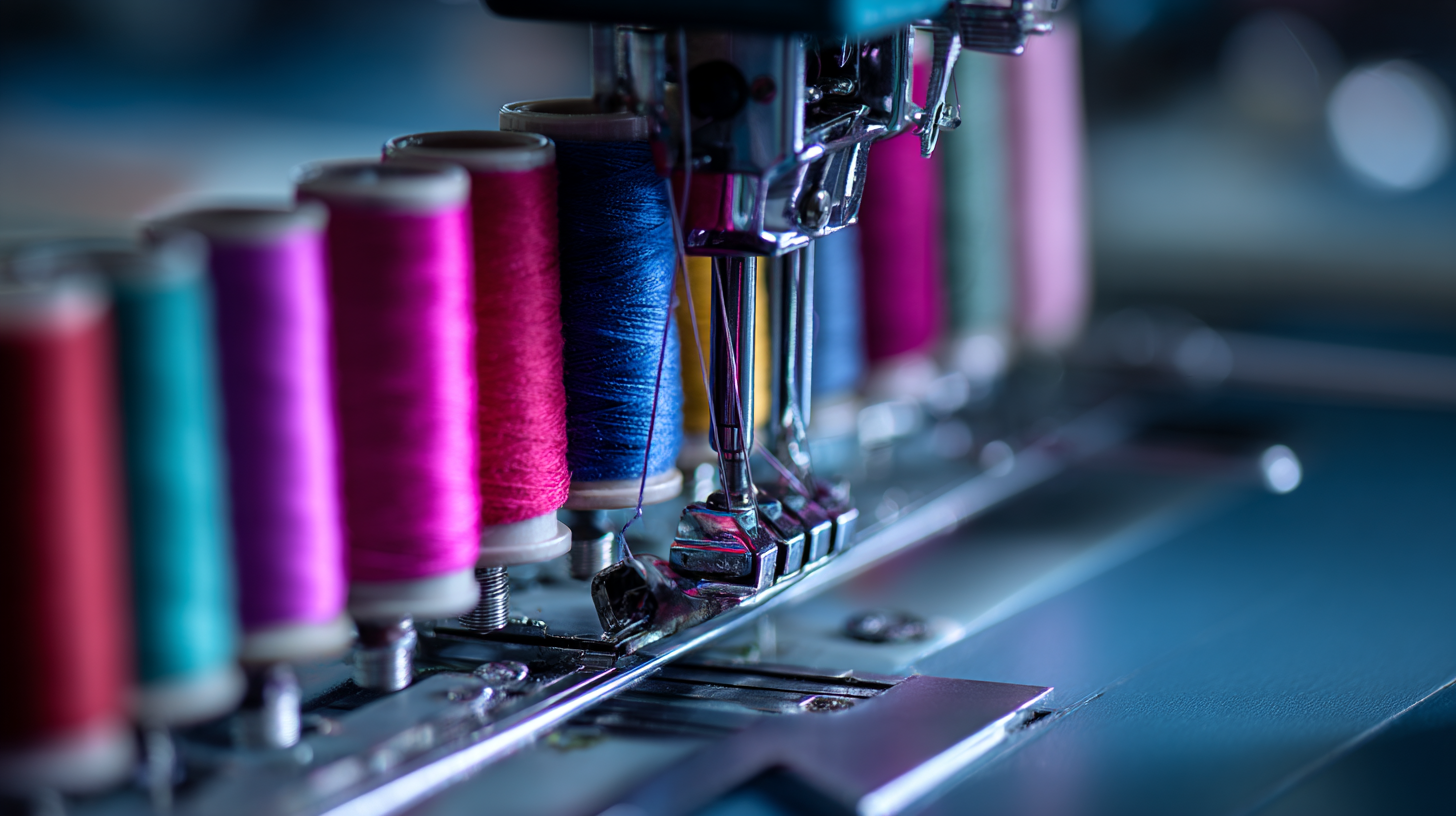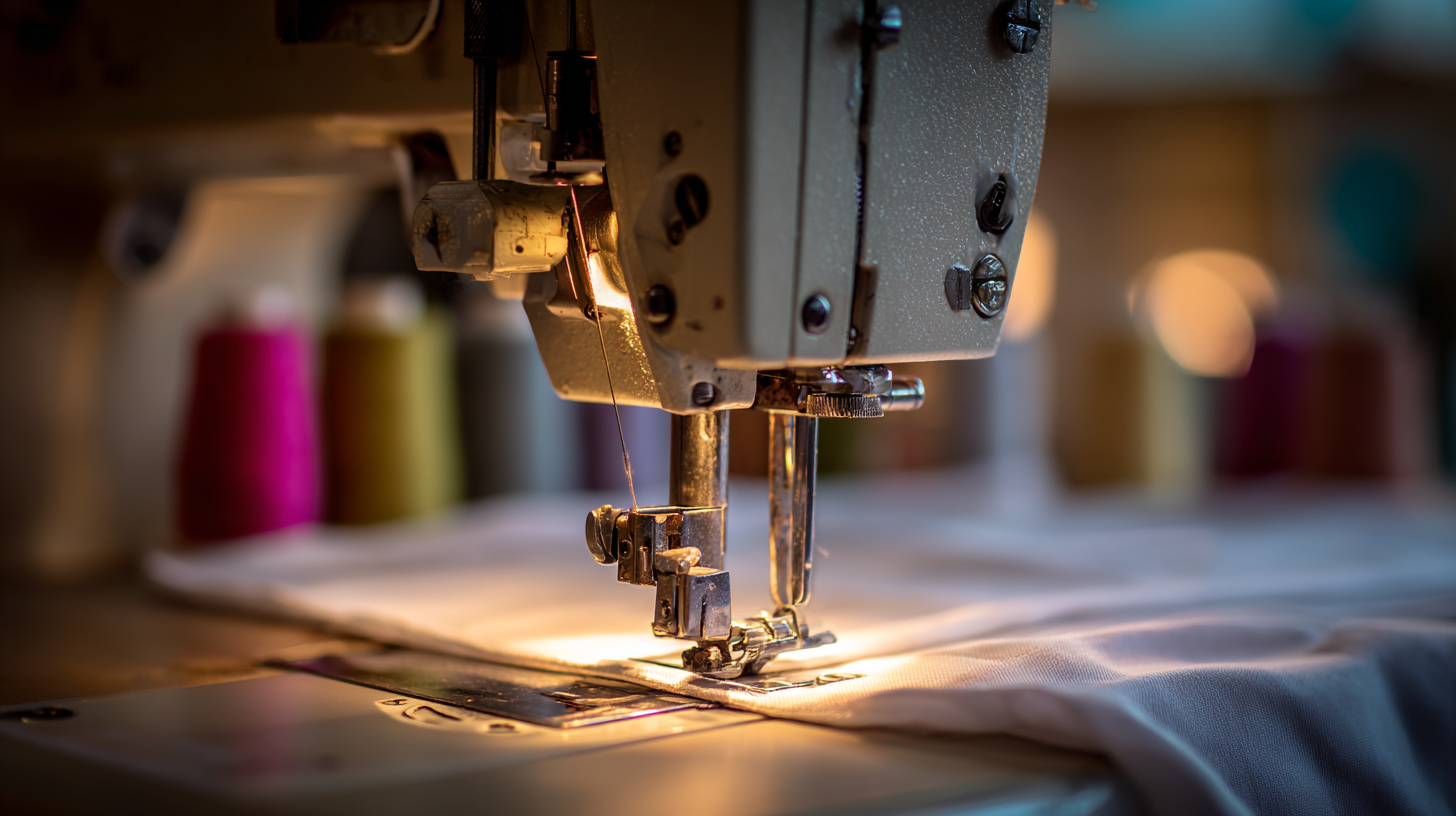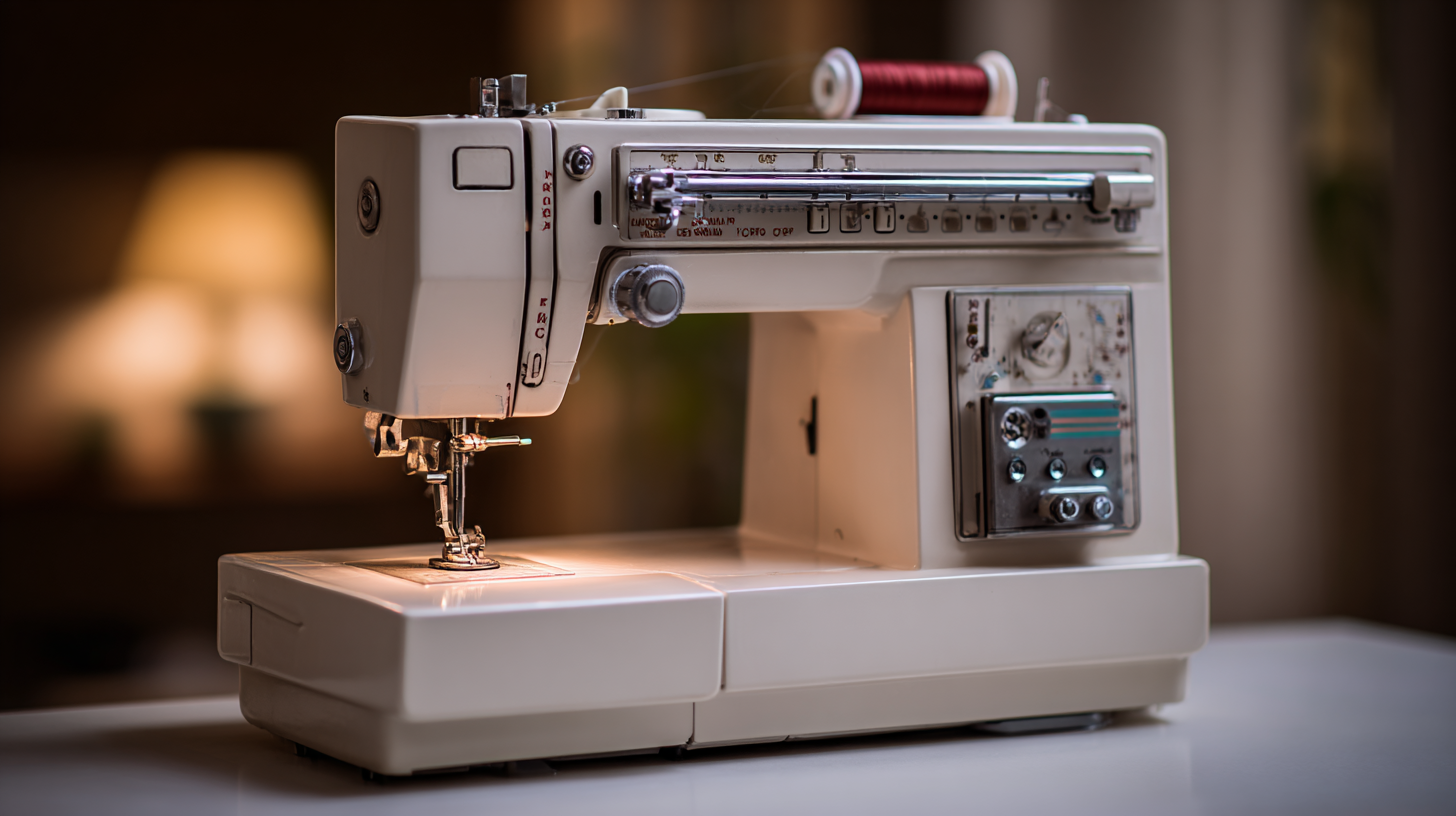Unlocking Efficiency and Precision with the Advanced Bobbin Winder Sewing Machine for Seamless Projects
In the world of sewing, efficiency and precision are paramount, especially when it comes to executing seamless projects. One tool that has revolutionized the sewing experience is the bobbin winder sewing machine. This advanced piece of equipment not only streamlines the process of winding threads but also ensures that the bobbins are filled evenly and accurately, which is critical for producing flawless seams. By investing in a high-quality bobbin winder sewing machine, both amateur and seasoned sewers can enhance their craft, saving valuable time while improving the quality of their work.

As we delve deeper into the realm of sewing machines, it becomes evident that the best models on the market cater to a variety of needs, providing features that appeal to different skill levels and project requirements. In this article, we will explore the top five bobbin winder sewing machines, highlighting their unique benefits and the significant impact they can have on your sewing projects. Whether you're looking to tackle intricate designs or basic alterations, the right bobbin winder sewing machine can unlock unparalleled efficiency, making your sewing experience more enjoyable and productive.
Understanding the Key Features of the Advanced Bobbin Winder Sewing Machine
 The Advanced Bobbin Winder Sewing Machine is designed to streamline the sewing process, significantly enhancing both efficiency and precision. One of its standout features is the automatic bobbin winding system. This technology eliminates the manual effort traditionally required, allowing users to focus on the creative aspects of their projects while ensuring consistent thread tension and avoiding common winding mistakes.
The Advanced Bobbin Winder Sewing Machine is designed to streamline the sewing process, significantly enhancing both efficiency and precision. One of its standout features is the automatic bobbin winding system. This technology eliminates the manual effort traditionally required, allowing users to focus on the creative aspects of their projects while ensuring consistent thread tension and avoiding common winding mistakes.
Another key feature is the built-in tension control mechanism, which adjusts according to the type of fabric being used. This ensures that each stitch is executed with the utmost accuracy, providing a professional finish to every seam.
Additionally, the machine is equipped with a user-friendly interface, including clear instructions and easy navigation through settings, making it accessible for both beginners and experienced sewers. As a result, the Advanced Bobbin Winder Sewing Machine not only simplifies the bobbin winding process but also allows for seamless project execution from start to finish.
Step-by-Step Guide to Setting Up Your Bobbin Winder for Optimal Use
Setting up your bobbin winder for optimal use is essential for achieving efficiency and precision in your sewing projects. Start by ensuring your sewing machine is properly connected to the power source and has been turned off during setup for safety. Next, locate the bobbin winder on your machine, which is typically on the top or side, and prepare the bobbin case. Insert a compatible bobbin that matches your thread type into the case, making sure it clicks securely in place.

Techniques for Maintaining Your Bobbin Winder for Long-lasting Performance
Maintaining your bobbin winder is essential for ensuring long-lasting performance and efficiency in your sewing projects. Regular cleaning is the first step in this process. Dust and lint can accumulate in the mechanism, hindering its operation. After each use, take a moment to wipe down the machine with a soft cloth and a brush to remove debris. Additionally, pay attention to the bobbin area; a clean workspace ensures that the machine runs smoothly.
Lubrication is another critical technique for upkeep. Just like any mechanical device, a bobbin winder requires proper oiling to function optimally. Refer to the manufacturer’s instructions for the correct type of oil and the recommended intervals for application. A well-lubricated machine reduces friction, leading to more precise winding and preventing wear and tear over time.
Finally, regularly checking the alignment of the bobbin winder is important. Misalignment can cause uneven winding, resulting in frustrating sewing experiences. If you notice any discrepancies, consult the user manual for adjustment tips. By focusing on these maintenance techniques, you will ensure that your advanced bobbin winder continues to perform accurately and efficiently for all your seamless projects.
Unlocking Efficiency and Precision with the Advanced Bobbin Winder Sewing Machine for Seamless Projects - Techniques for Maintaining Your Bobbin Winder for Long-lasting Performance
| Feature | Description | Maintenance Tips | Expected Lifespan (Years) |
|---|---|---|---|
| Automatic Thread Cutting | Cuts threads automatically for seamless sewing. | Regularly check thread paths for debris. | 10 |
| Speed Control | Allows adjustment of sewing speed for precision. | Clean speed settings and lubricate as needed. | 8 |
| Dual Bobbin Capability | Supports two bobbins for continuous sewing. | Keep bobbin compartments clean and free of lint. | 9 |
| Built-in Stitch Patterns | Multiple stitching options for various projects. | Regularly review stitch settings for consistency. | 7 |
| User-friendly Interface | Intuitive controls for easy operation. | Ensure software updates are applied regularly. | 5 |
Maximizing Efficiency: Tips for Integrating the Bobbin Winder into Your Workflow
Integrating an advanced bobbin winder sewing machine into your workflow can significantly maximize efficiency and precision in your sewing projects. The seamless incorporation of this technology allows for automation of the winding process, reducing manual errors and saving valuable time. By streamlining the preparation phase, sewists can focus more on creativity and project execution rather than tedious setup tasks. This transition not only enhances productivity but also leads to a more organized workspace, where tools and materials are readily accessible and efficiently managed.
To fully leverage the capabilities of the bobbin winder, it is crucial to align it with your existing workflows. Consider creating a systematic approach that includes regular maintenance routines, training sessions on machine operation, and integrating the winder with other automation tools if applicable. By adopting these practices, you will cultivate a connected workflow that mimics trends seen in broader industries like ecommerce and genomics, where automation is pivotal. Embracing an automated bobbin winder not only makes sewing projects more seamless but reflects a fundamental shift towards innovation and efficiency in creative processes.
Common Troubleshooting Tips for the Advanced Bobbin Winder Sewing Machine
The Advanced Bobbin Winder Sewing Machine has revolutionized the sewing industry by enhancing efficiency and precision in various projects. However, like any sophisticated machine, users may encounter issues that can disrupt their workflow. Understanding common troubleshooting tips can save time and maintain productivity. For instance, if the bobbin winder isn’t functioning, check the thread tension. A study by the Sewing Machine Trade Association indicates that improper tension accounts for approximately 30% of common sewing machine problems. Adjusting the tension can often resolve winding issues, ensuring a seamless workflow.
Another frequent issue is thread breakage during the winding process. This can often be traced back to using the incorrect thread type or size for the machine. According to a report by the American Sewing Guild, using the right thread can reduce thread breakage by up to 50%. Therefore, always verify compatibility with the manufacturer's specifications. Regular maintenance, such as cleaning the feed dogs and lubricating moving parts, is also crucial, as neglecting these tasks can lead to operational inefficiencies. By addressing these common concerns, users can enhance the performance of their Advanced Bobbin Winder, ensuring they achieve flawless results in their sewing projects.
